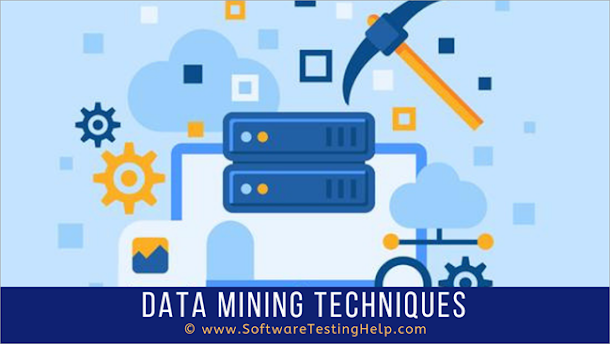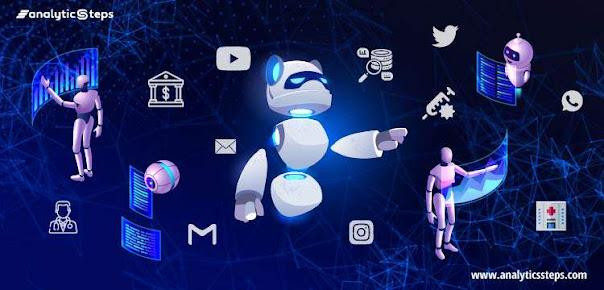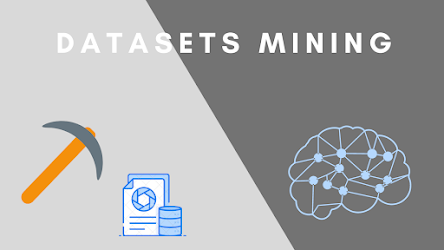Latest Techniques To Extract Dataset For Machine Learning

Introduction
ML is heavily dependent on data. It's the main factor that allows algorithm training and the reason why machine learning has gained so much traction over the last few years. Whatever your massive amounts of information and data science knowledge, if aren't able to comprehend the data, your machine will likely be ineffective or, in some cases, even dangerous.
The fact is, every dataset is flawed. This is what makes data preparation an essential step in the process of machine learning. In short the term "data preparation" refers to an array of steps which help make your data more suitable to machine learning. In more general terms, data preparation also involves setting up the appropriate data collection system. This is the bulk of the time used for machine learning. Sometimes, it can take months until the initial algorithm is created!
How do you collect Dataset For Machine Learning
The line that divides those who are able to use ML from those who don't is drawn through decades of collecting data. Some companies have been collecting documents for decades, with such results that they require trucks to transfer the data into the cloud since traditional broadband isn't sufficient for the task. For those who are just to the forefront, a lack of information is normal however there are solutions to transform that negative into an advantage.
The first step is to rely on open source data sources to start the ML process. There are a lot of data that machine learning can use around, and some companies (like Google) are ready to offer it up for free. We'll look at the potential of public datasets a little later. Although there are opportunities however, the most value is in internal gold-colored data nuggets derived from company's decisions and actions within your own business.
The second thing is that - unsurprisingly, you now are able to collect data in the correct method. Companies that began collecting data using the use of paper ledgers but ended by using .xlsx or .csv files are likely to struggle in preparing data than those that have only a modest but impressive with a Dataset For Machine Learning. If you are aware of the problems that machine learning is expected to accomplish, you can design an automated data collection system ahead of time.

Key points for Data Mining process
It's been so talked about, it's the thing everybody must be doing. Focusing on large data right from the beginning is a great idea but it's not all about petabytes. It's about being able to handle them in the right method. The more data you have is, the more difficult it will be to make good use of it, and produce insight. The fact that you have a lot of lumber doesn't necessarily mean that you'll be able to convert it into a huge warehouse of tables and chairs. The general advice for newbies is to start with a small amount and then reduce the complexity of their information.
1. Be clear about the issue early
Understanding what you are trying to anticipate will help you determine which data is more valuable to gather. When defining the issue perform research and think about the categories of classification, clustering regression and ranking we discussed in our paper on the application to business to machine learning. In plain English the tasks are distinguished by the following criteria:
a) classification. You want an algorithm that can be used to answer binary question (cats or dogs bad or good goats or sheep You get the idea) or create an all-class classification (grass trees, or bushes as well as dogs, cats or birds, etc.) Also, you need the answers that are correct identified to ensure that the algorithm can be taught from these. Learn how to take on data labeling within your company. The concept of clustering is HTML0. You want an algorithm that can determine the principles of classification and the amount of classes. The major difference from classes is that you do not understand what the categories and the principles behind the division of them are. This typically happens when you must divide your customers into segments and then tailor the approach to each segment based on its characteristics.
b) Regression. You want an algorithm that will give you a numerical value. In the case of, for instance, if have a hard time coming up with the ideal value for the product, since it's based on a myriad of variables Regression algorithms can help in estimating the price.
c) Ranking. Some machine learning algorithms rank objects using several characteristics. The use of ranking is to suggest movies on video streaming services, or to show the types of products a consumer may purchase with a higher likelihood based on prior purchase actions. There's a good chance that your company's issue is solvable with this easy segmentation, and you could begin to adapt a data source to suit your needs. The general rule at this point is to stay clear of complex issues.
2. Establish data collection mechanisms
Instilling a data-driven culture within an organization could be one of the biggest challenges of the whole initiative. We have briefly discussed this issue in our article on the strategy of machine learning. If you plan to employ machine learning to improve your predictive analytics the first thing you need to tackle is tackling data fragmentation. For instance, if you take a look at travel technology one of AltexSoft's major specializations - data fragmentation is among the biggest issues with analytics here. Hotel businesses' departments responsible for the management of physical properties get very intimate details about their guests. Hotels have access to the credit card numbers of guests as well as the kinds of amenities they select as well as address of residence, room service usage, as well as meals and drinks consumed during the stay. The websites that make reservations for these rooms, however might treat guests as strangers.

The information is splintered into different departments and may even have different tracking points within the department. Marketers could have access to CRM, however the customers don't have access to web analytics. It's not always feasible to connect all data streams into central storage space if there are numerous channels of engagement as well as acquisition and retention However, most of the time it's doable. Most of the time, data collection is the responsibility of an Data engineer who is in charge of creating infrastructures for data. However, in the beginning it is possible to hire an engineer in software who has an understanding of databases.
3. Check your data quality
The first question you must be asking yourself is: do you believe in your Quality image, audio, Video Dataset? Even the most advanced machine learning algorithms won't be able to work when data isn't good. We've discussed in depth about the quality of data within a different piece however, you must examine a variety of key factors.
Are there any technical issues during the transfer of information? For example, the same records could be duplicated as a result an error on the server or an error in your storage system or perhaps an attack from cyberspace. Examine the impact these events had on your information. How many missing values does your data contain? Although there are options to deal with missing records, that's what we'll discuss later and estimate the number that is crucial.
Do you have the right data for your job? If you've sold appliances for homes throughout the US and are now planning on expanding into Europe do you have the same information to forecast demand and inventory? Is your data imbalanced? Imagine you're trying to reduce the risk of supply chain disruptions and remove suppliers you think aren't reliable and use the quantity of characteristics (e.g. size, location and so on). If your data set is labeled with 1500 entries that are that are deemed reliable, but only 30 you believe to be not reliable, your model will not have enough data to know about the ones that aren't reliable.
4. Reduce data
Once you have identified the desired value (what value you wish to forecast) is, your common sense will guide you in the right direction. You can determine that certain values are crucial and which ones will increase the complexity and dimensions to your data, without forecasting input. This technique is known as attribute sampling.. For instance, you would like to determine the types of customers who are likely to purchase large amounts of items from the online shop. The the age of your customers or their place of residence, as well as gender could be more reliable rather than credit card information. This can be done in another method. Think about other variables you might need to find additional dependencies. For example the addition of bounce rates could improve the accuracy of the prediction of conversion.

This is that domain-specific expertise is a an important part. In our first story that not all data scientists realize that asthma may cause pneumonia-related complications. Similar is the case with the reduction of large data sets. If you've never worked with a unicorn that has one foot in healthcare fundamentals and another in the field of data science, then it's possible for a data scientist would struggle to comprehend what values have significant to a data set.
Another method is known as the record sampling. This means that you eliminate records (objects) that have missing or incorrect, or than representative values in order to make your predictions more precise. This technique may be utilized in later stages , when you require an initial model prototype to determine the extent to which a particular machine learning technique produces the desired results and determine the ROI from the ML project.
5. Complete data cleaning
As missing values could significantly decrease the accuracy of predictions, consider this issue to be a top important issue. When it comes to machine learning, approximate or assumed values are "more appropriate" to an algorithm as opposed to missing ones. Even when you don't know which value is correct, techniques exist to "assume" what value is not present or to avoid the problem. What is the best way to clean information? Making the right choice greatly depends on the type of data and the type of domain you are in:
Substitute missing values using Dummy value, e.g., n/a in categorical, or 0 in numerical values
If you are looking for categorical values You can also employ the most commonly used items to complete the equation. If you utilize a machine learning as platform as a service Data cleaning is automated. As an example, Azure Machine Learning allows you to select between a range of methods and Amazon ML can do the job without you having to do anything.
6. Create new features from existing ones and Discretize data
Certain values within your data set may be complicated and decomposing the data into smaller pieces will allow you to capture more specific connections. This is in fact contrary to the idea of reducing the amount of data because you need to create new attributes, based on existing ones.
Sometimes, you'll improve the accuracy of your prediction if you convert numbers into categorical values. This can be accomplished in a number of ways, such as breaking down the entire range values into various groups. If you look at the age of your customers it isn't that big of a distinction between 13 and 14, or the ages of 26 or 27. Therefore, these numbers can be transformed into age-related groups. If you categorize the values makes it easier of an algorithm and improve the accuracy of predictions.

Get your ML Datasets with GTS
At Global Technology Solutions (GTS) Our services scope covers a wide area of image data collection and image Data Annotation Services for all forms of machine learning and deep learning applications. As part of our vision to become one of the best deep learning image data collection centers globally, GTS is on the move to providing the best image data collection and classification dataset that will make every computer vision project a huge success. Our image data collection services are focused on creating the best image database regardless of your AI model.